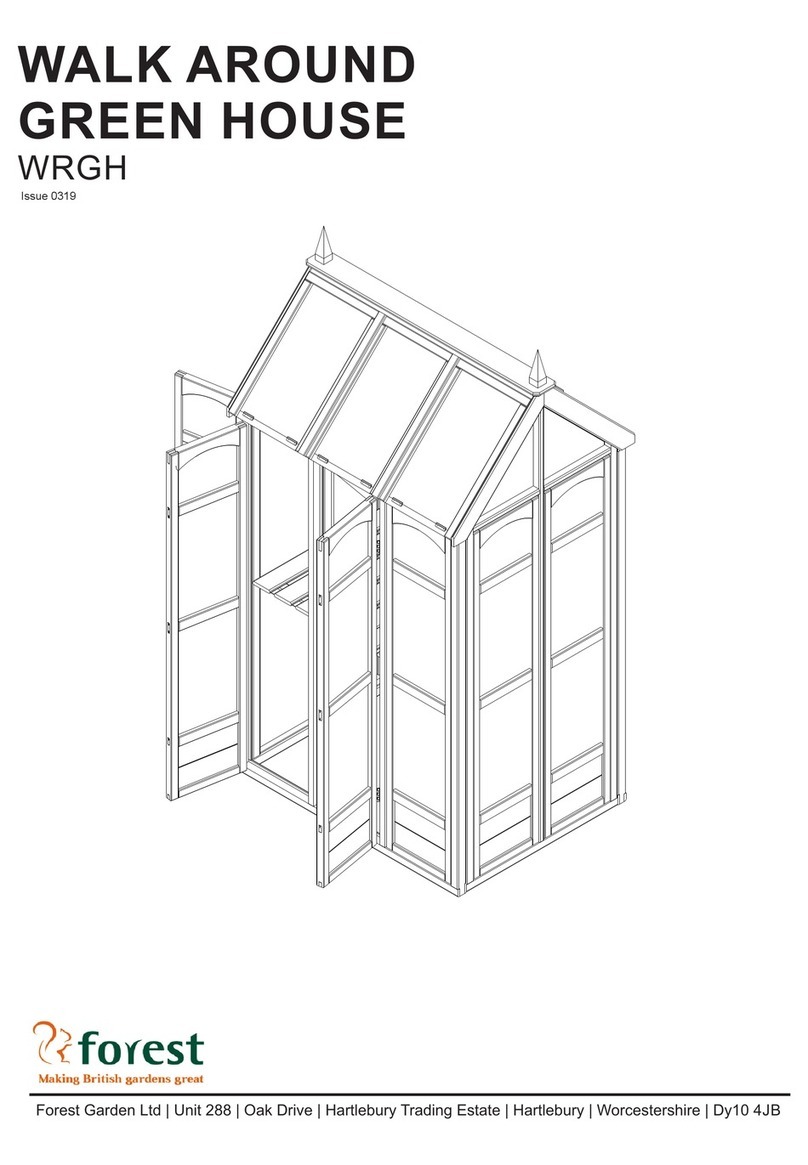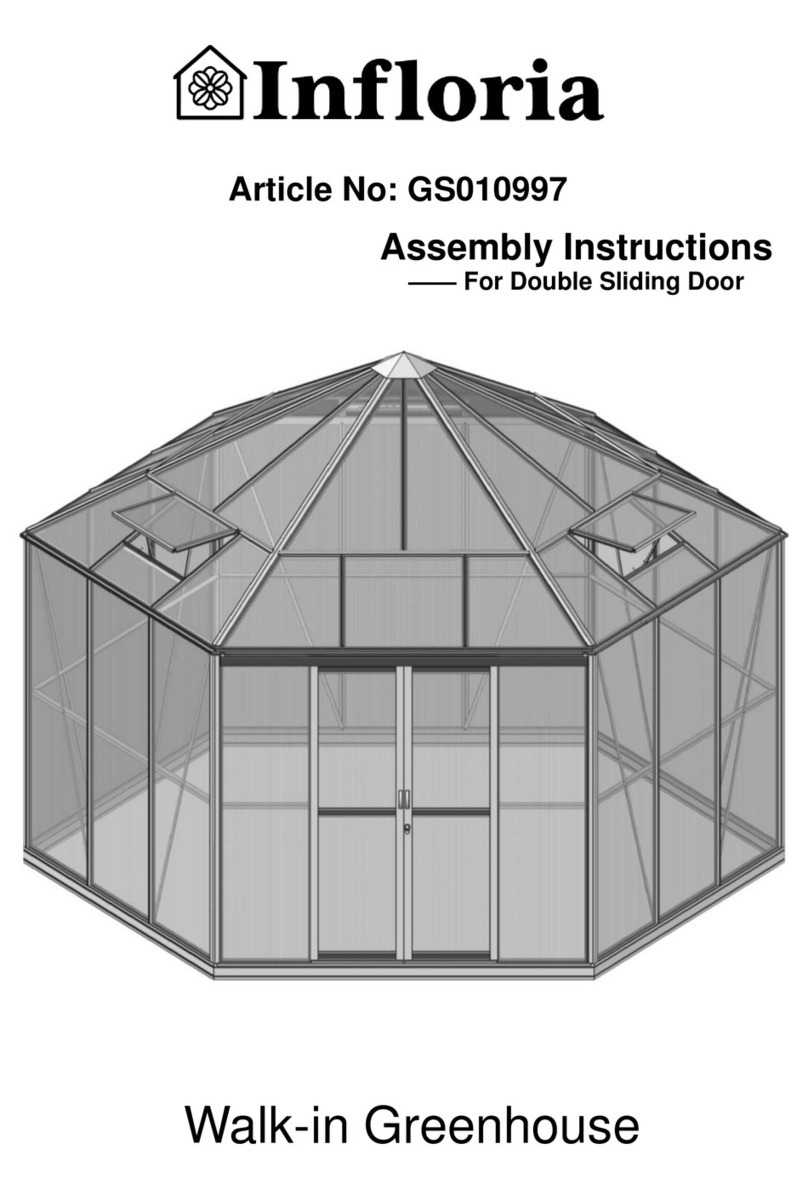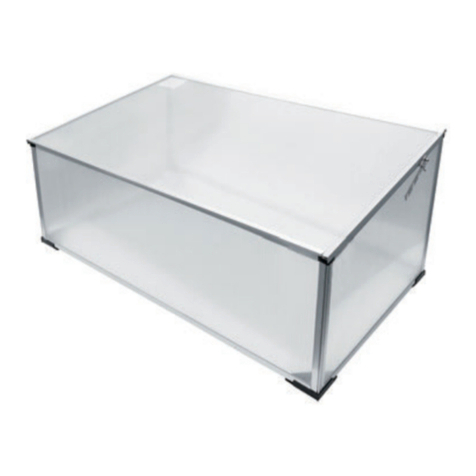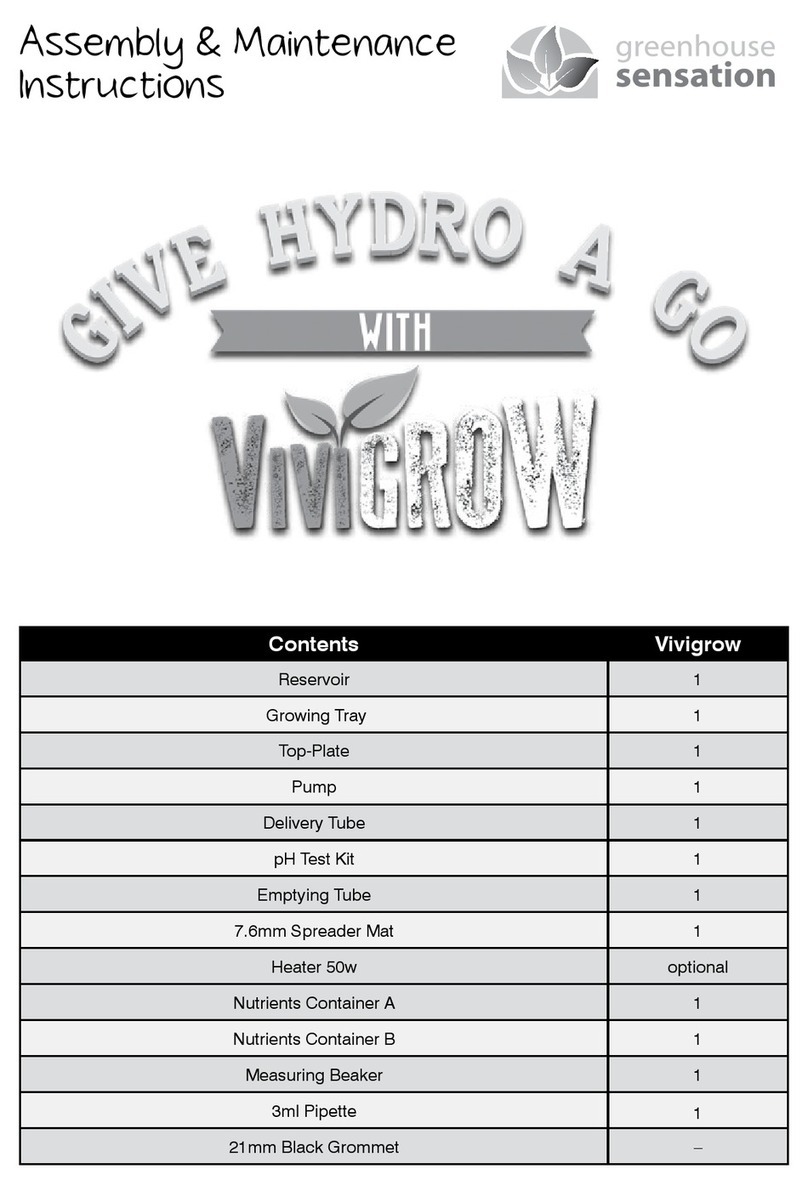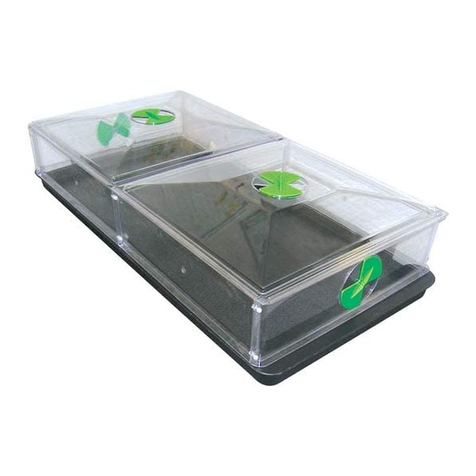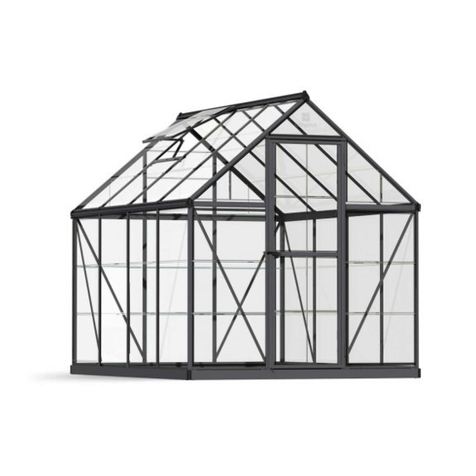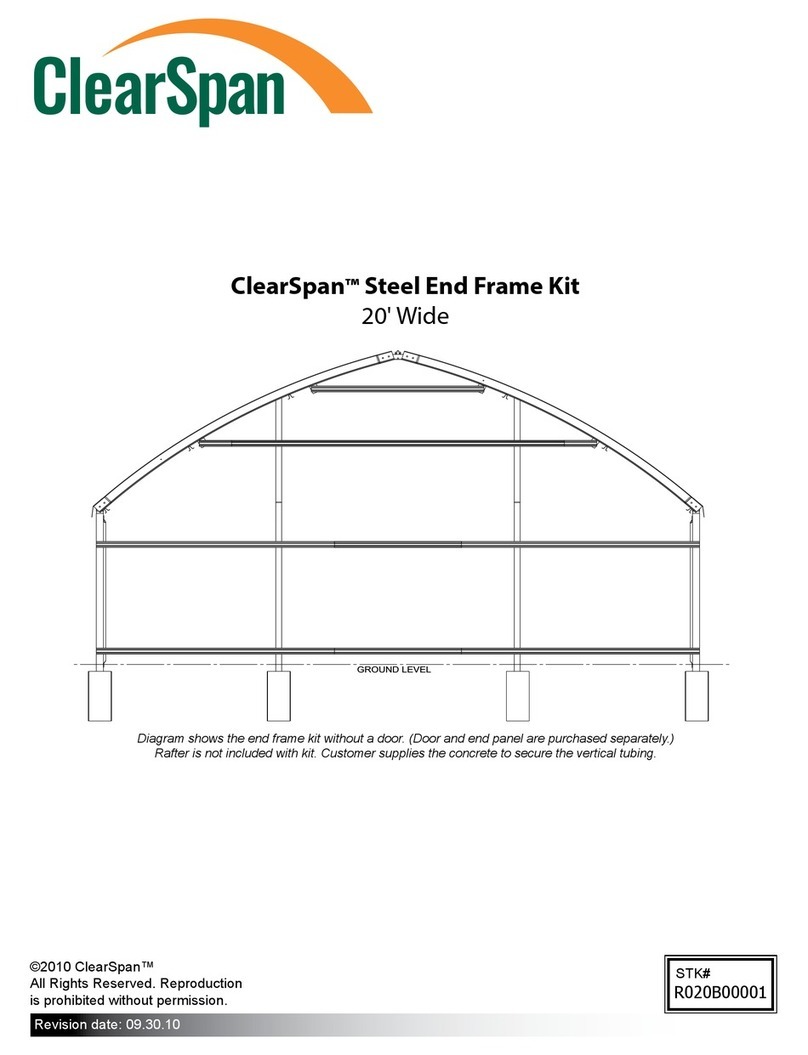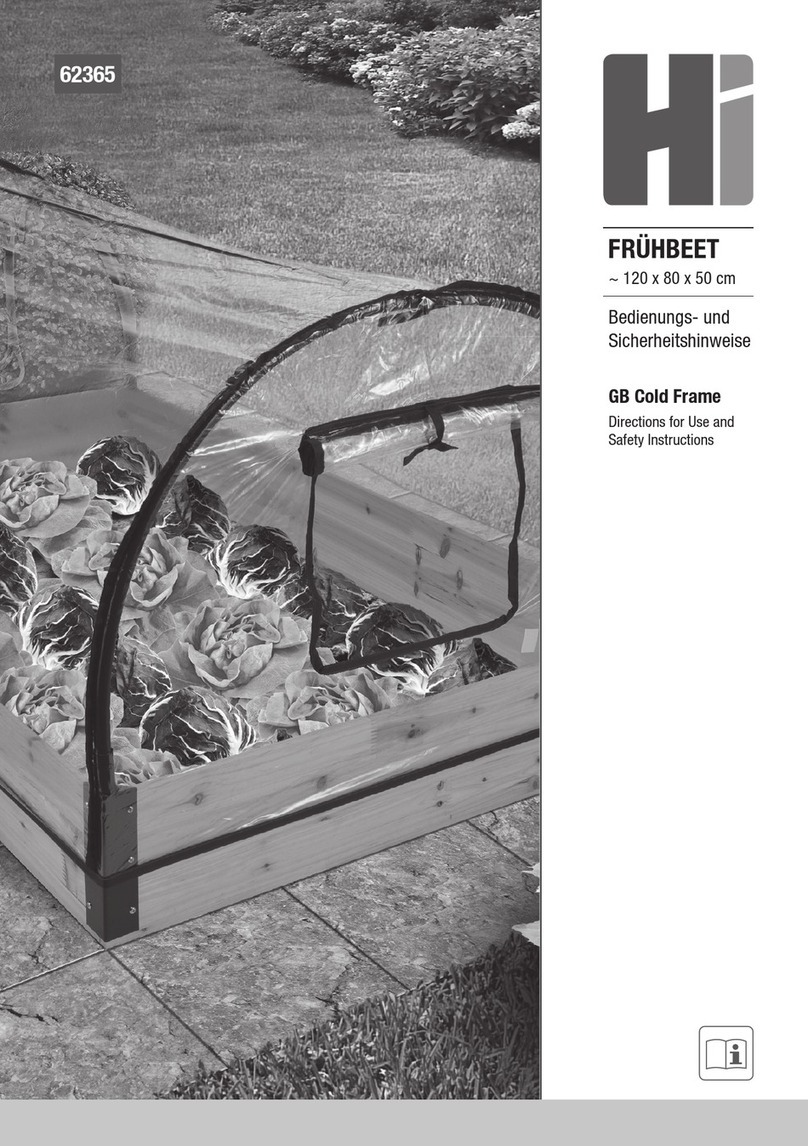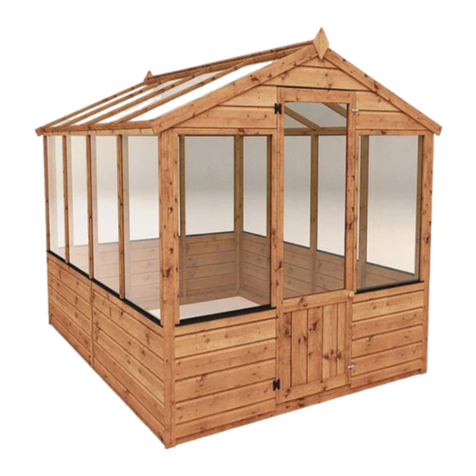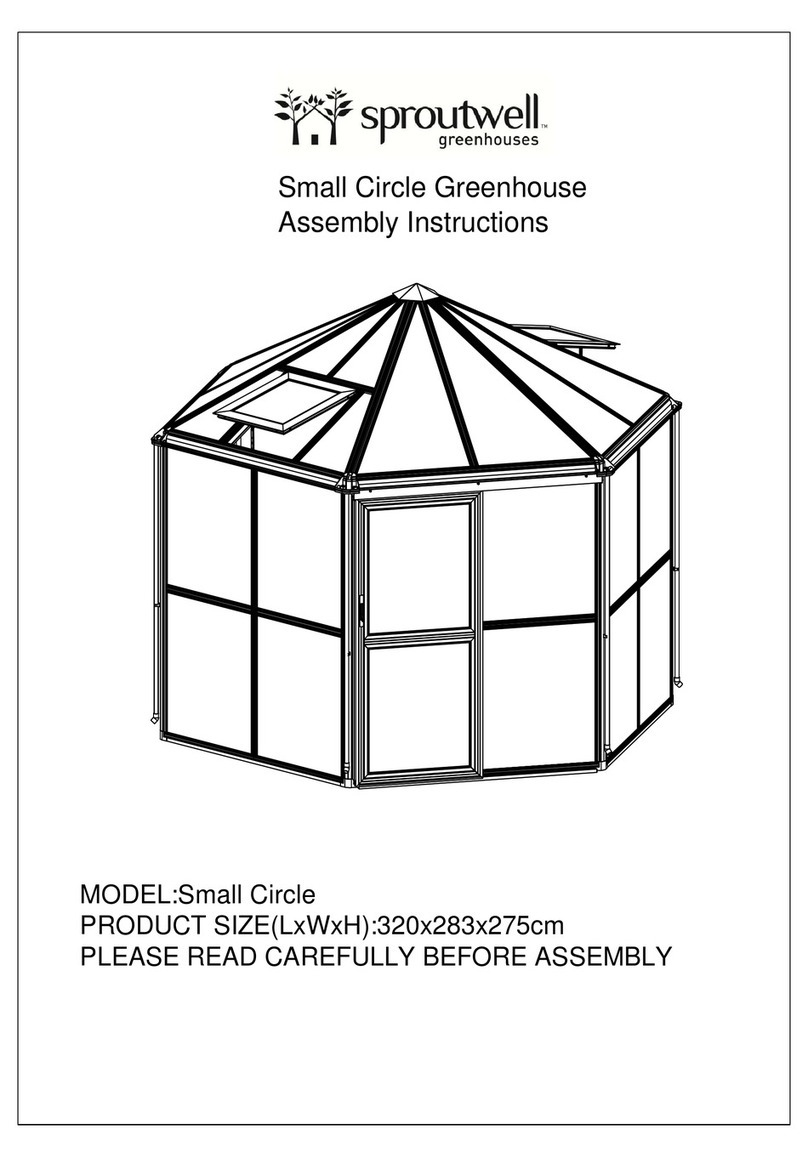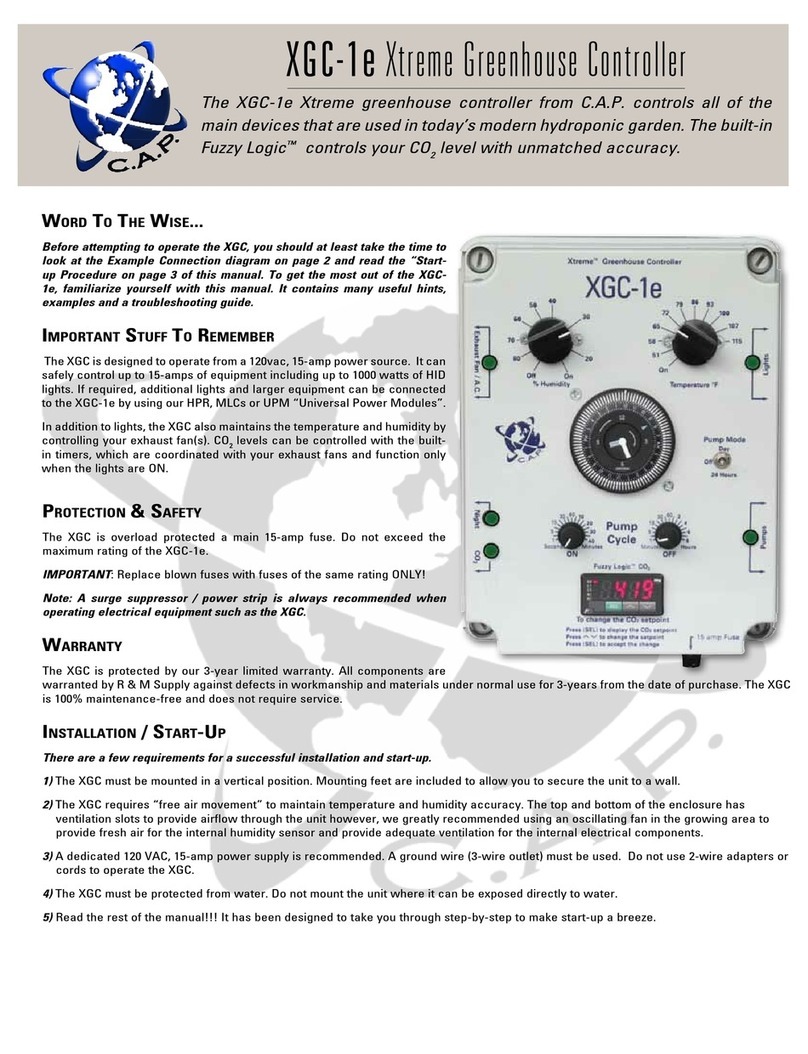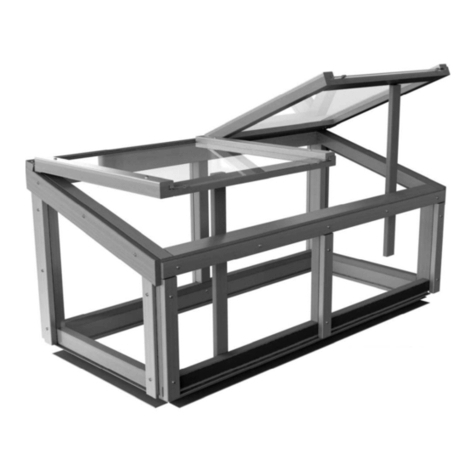
Propagation of cuttings
• Choose non-owering, fast growing shoots approximately 7–8 cms/ 3 inches long.
• Use a sharp knife to cut the stem just below the leaf node. Take care not to touch
the cut surfaces which can introduce disease into the cutting. Remove most
of the leaves from the cutting, leaving 3 or 4 at the tip of the shoot.
• Use a dibber to make 2–3cm deep holes in 3 inch pots lled with compost.
• If you are using rooting compound dip the cut end of the cutting into the
rooting compound.
• Put the cuttings into the holes in the compost and rm down gently making
sure there are no air pockets.
• Use a ne spray to water well. Cover with the lid and close the vents.
• When the cuttings have rooted gradually open the vents and lower the temperature
to acclimatise the young plants to cooler conditions.
Managing the temperature
• The GeoPod has a temperature range between 5°C and 30°C.
• The GeoPod has a temperature lift of 12°C, meaning if the temperature of your
greenhouse is 5°C, then the propagator will reach a maximum of 17°C (a low ambient
temperature means low light levels and a longer period of growing before plants will
be transplanted, therefore a lift of more than 12°C is not desirable for the plants).
If you require a greater lift than this, take your GeoPod into your home.
• The GeoPod has no cooling ability. If the temperature of your greenhouse is warmer
than your desired propagating temperature remove the lid from your GeoPod and
ventilate your greenhouse.
How to use your lights
• Seedlings and young plants benet from 12–16 hours of good light per day.
Aim to use your lights to achieve these daylight hours.
• In spring switch your lights on for 1–2 hours before sunrise and after sunset.
Use a timer if you want to automate this cycle.
• Never leave your lights on 24 hours a day - plants need a dark period.
• On very cloudy or overcast days, you can leave the lights on for the full 12–16 hours.
• On very sunny days switch your lights off completely.
• Your thermostat will ensure the temperature in your Geopod does not drop
below the set temperature.
• If the temperature in your Geopod is getting hotter than 32°C then switch
the propagation lights off for longer periods.
• Consider ventilation or shading.
Hardening Off
• Gradually acclimatise your plants to life, outside the GeoPod, by removing the lid
during the day. If a frost or severely cold weather is forecast it is best to use the lid.
Set-up instructions
• Find a good spot for your GeoPod, you will need an even surface with good natural
light and access to a power supply, avoid strong sunlight because you don’t want
to overheat your seeds. Keep away from any heat sources or cold draughts.
• Connect the plug of the temperature controller to the GeoPod and plug the controller
into the mains supply.
• Feed the temperature sensor wire through one of the vents. Place the temperature
sensor in the GeoPod at least 1 inch (2.5 cms) from the sides of the GeoPod.
• Do not push the temperature sensor into soil/compost and do not have it touching
the base.
• Place the temperature controller on a at surface. Press then ‘+’ or ‘-’ buttons
to set the target temperature, press once per 1°C. Press to set.
• As your seeds/cuttings develop gradually open the vents and remove the lid to
manage humidity. Never allow the compost to dry out.
Lights Set Up
• Open your lights and remove the lm from the reectors.
• Prise the dust cap off one of the lights (at the output end).
• Position each light in the grooves of the propagators lid and centre on your
Geopod Propagator.
• Connect the power cord with the plug and on/off switch to the input end of the light
from which you previously removed the dust cap. Do not plug into the power socket
at this time.
• Take the connecting cable. Click one end of the connecting cable into the Input
of one light and click the other end of the cable into the Output of the other light.
• The lights can now be plugged into a power socket and switched on.
Propagating Seeds
• Completely ll each seed tray with quality seed compost. Use a ne spray to dampen
the compost.
• Firm down the compost gently using a at based tool.
• Sow your seeds and cover them with nely sieved compost to the same depth
as your seeds. e.g. if the seeds are 1mm diameter, cover with 1–1.5mm of sieved
compost, follow instructions on the seed packet.
• Water well using a ne spray until the compost is moist but not saturated.
• When the seedlings have germinated you will see two small ‘seed’ leaves. When
these appear open the vents gradually to decrease humidity. As your plants grow
prop open the lid to increase ventilation, eventually remove the lid.
• If your seedlings become crowded prick some out with a dibber to give others
more space.
• When true leaves (typical of the plant type) appear the plants are large enough to be
handled and should be transplanted into pots or trays so that they have more space
in which to develop. Stems are very fragile at this stage, take care to handle
by the leaves.

